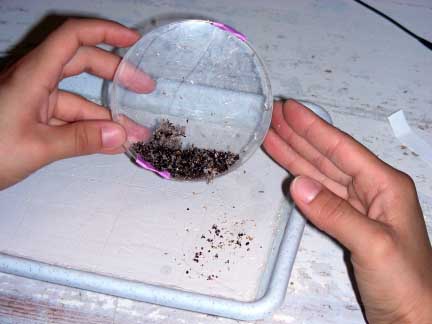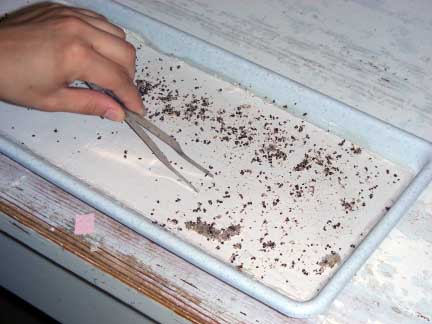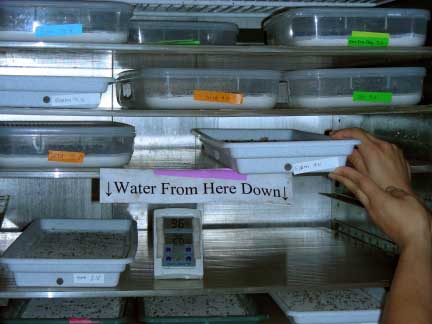LAB TOUR Part 5
Rearing the pupae
When ants on the colony die they are placed by other ants in the midden pile. If the ant was infected by a phorid fly, then the head of the ant falls off and the fly continues to pupate in the ant head capsule.

A lab technician deposits the fly pupae on a sterile, moist plaster- lined tray so that it can be watered and kept at high humidity until the fly emerges.

A lab tech looks through the midden piles to count the pupae.

Many trays of developing fly pupae and midden are kept in the lab at constant temperature and humidity.
Go to:
Main Menu, Lab Tour intro
1. Drip line, 2. Formicary, 3. Sieving, 4. Mass Attack, 5. Rearing pupae

